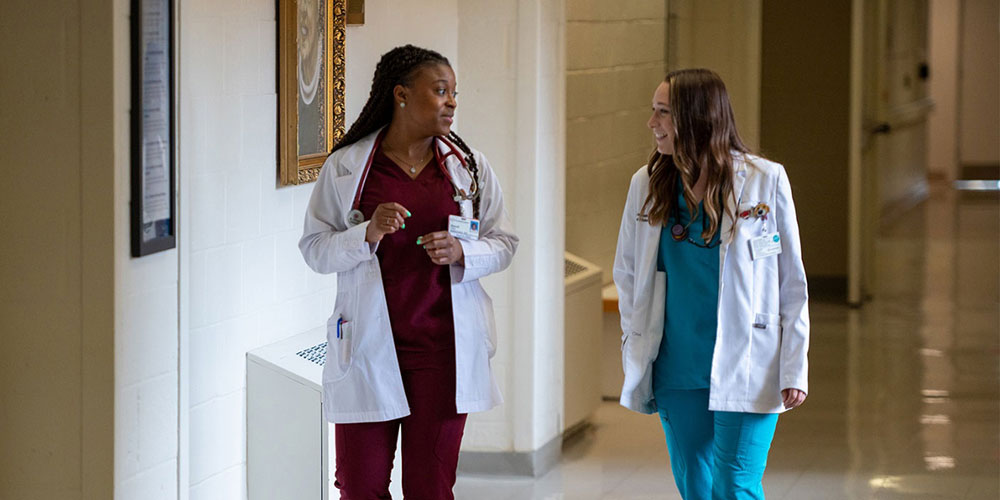The timeline to becoming a doctor won’t always look the same from one physician to the next, but there are certain milestones that all medical students are expected to complete. The first, and most obvious, is attending medical school to earn your medical degree.
After completing those four years of med school training and being granted an MD, however, you can’t jump right into treating patients independently. There are still some additional steps you’ll need to take before you’ll be able to practice as a licensed physician.
What comes after medical school?
As you probably know, your first couple of years in med school will be centered around learning the fundamentals in the classroom, while the second half of your MD program will be more focused on clinical training. Med students gain a lot of valuable skills during this time, but there will still be some additional hands-on training required before you can earn your medical license.
That’s what residency after medical school is for. This immersive postgraduate training takes place in active medical facilities where you’ll be working as a resident physician, treating patients under the supervision of a licensed doctor.
Residency is a critical component of every physician’s training; it is challenging and fast-paced, and it offers newly granted MDs a crash course in hands-on patient care within their chosen specialty. It’s also a core requirement for all physicians.
It might be encouraging to know that you’ll have a bit more agency over your residency experience than you probably will during clinical rotations in med school. During your med school clinicals, you’ll be exposed to a broad range of medical specialties. This gives you an opportunity to not only hone your patient care skills, but also determine which medical specialty you’ll choose to pursue in your career as a physician.
When it comes to postgraduate training, you’re able to apply to medical residency programs after medical school within your chosen specialty. Med students typically begin preparing for the Residency Match at the start of their fourth and final year in their MD programs.
After completing residency interviews and creating a rank order list of your top programs, a computerized algorithm will match you into a residency program. Depending on the medical specialty you choose, residency training can take anywhere from three to seven years.
Some specializations call for additional training in a post-residency fellowship program. This “subspecialty” training is common in pediatrics, orthopedics, oncology, surgery, internal medicine, and other areas of practice. It typically takes anywhere from one to three additional years.
Also keep in mind that you’ll need to sit for your final licensing exam before you can practice independently, but you don’t need to wait until your postgraduate residency and fellowship training are completed.
Med students become eligible to take the United States Medical Licensing Examination (USMLE) Step 3 upon graduating from their MD programs. Students will take USMLE Step 1 and Step 2 exams during medical school. However, Step 3 is designed to assess your ability to provide patient care independently, which is why many find it beneficial to complete a year or two of residency before sitting for this final exam. In fact, most resident physicians sit for the USMLE Step 3 during the first half of their residency programs.
Once you’ve completed a medical residency program, participated in post-residency fellowship training (if applicable), and obtained a passing score on the USMLE Step 3, you’ll be able to apply for a license to practice as a physician.
Prepare for a successful medical career
When you’re standing at the starting line, the training to become a doctor can seem extensive, but every phase of preparation is essential for practicing physicians. While your current focus may be on applying to and/or completing medical school, it’s never too early to begin laying the foundation for post-graduate success.
You can learn more about what you can be doing to ensure you’ll be eligible for your top residency programs in our article “How to Land the Medical Residency You Want: 7 Criteria You’ll Be Evaluated On.”

